The 10 worst Hearthstone legendary cards
These are the ones that really make your heart sink when you open them.
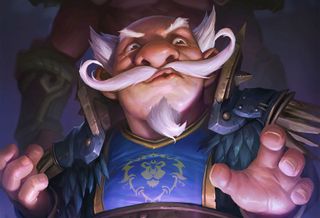
Frequent visitors will be familiar with our guide to the best legendary Hearthstone cards, which aims to help you spend your dust on the very best Blizzard’s designers have to offer. As we await the next expansion, I thought it might be fun to assemble another panel to pick the most disastrous legendaries you can open from packs. There are cards which break your heart when you see that orange glow only to have it transform into unplayable trash.
This time our panel is still comprised of pro players and casters, but I’ve focused on those known for creativity and a sense of fun. The full panel is as follows: HotMEOWTH, J4CKIE, Falcone, Tars. and arguably the best Wild player in the world, Control. Each listed ten cards in order of terribleness, with the worst at the top, and those lists were then combined into the one found here.
As ever, remember that crafting and dusting cards is a very personal thing, and that dusting legendaries in general is bad value. If you want to keep Nozdormu for the memes then who are we to say you’re wrong? But, if you are looking to dust a legendary, this list is place to start. Before we get on with it, a few notable near misses: Mekgineer Thermaplugg, Moorabi, Maexxna, Skycap’n Kragg and Herald Volazj all narrowly missed this list. If you think those cards are bad, remember that the ten cards which follow are even worse. Brace yourselves...
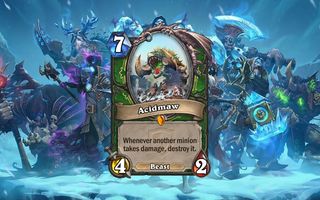
#10 Acidmaw
As with so many of the cards in this list, Acidmaw was seemingly designed with control decks in mind. Therefore, given that it’s a Hunter card, it’s already off to a bad start.
Acidmaw has some potential as a board clear when combo’d with Unleash the Hounds, and the effect can also be used to punch through Taunt minions. That’s the theory anyway. The reality is that if you need to get through Taunts, Hunter’s Mark is a much cheaper option, and more consistent given you can run two of them. As a class, Hunter also isn’t very well equipped to win attrition-based games, which is the only time the kind of expensive combo Acidmaw requires is going to be relevant.
The fact Acidmaw only has 2 Health also means it never sticks around on board, so any card you want to combo it with has to be played on the same turn. That requires keeping two cards in your hand for a long time, rather than dealing with problems immediately. For the princely sum of 10 Mana, you would be better served investing in a card like N’Zoth the Corruptor, which has better synergy with many Hunter cards anyway.
Acidmaw doesn’t do anything efficiently, and doesn’t solve any problems that other cards can’t fix way better. Ultimately, the best thing you can say about Acidmaw is that at least it makes Dreadscale look decent.
The biggest gaming news, reviews and hardware deals
Keep up to date with the most important stories and the best deals, as picked by the PC Gamer team.
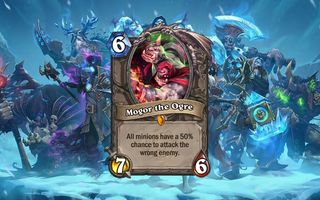
#9 Mogor the Ogre
Good players like to retain as much control over RNG as possible, and Mogor the Ogre’s card text achieves pretty much the exact opposite. In theory, the card is perfectly costed—and possibly even slightly favourable for the player. The stats are fine for a 6-Mana card and the effect is symmetrical, which means that it should benefit the person who deliberately chose to put it in their deck.
In practice, the best/only use for Mogor is as a defensive option when losing. If you are behind and get him from a random effect, he can very occasionally be a life-saver. But even then, it’s the least reliable of life-savers—like a safety raft that's inflated with hydrogen. Whatever deck you try to come up with, it’s almost impossible to envision a board state in which you’d reasonably want this big idiot on the board. Mo’ ogres, mo’ problems.
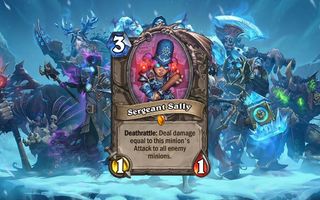
#8 Sergeant Sally
This was a surprise entry for me, not because it’s a particularly good card, but I feel like Sergeant ally ought to have a use in some kind of deck, somewhere. But three of our five panelists felt otherwise, and so here we are.
Sally saw some brief play after the release of Journey to Un’Goro in early iterations of Quest Rogue, with the idea being that a 5/5 bomb was actually a good board clear. Of course, that idea lasted about two days before people realised that killing your opponent was also a good way of getting rid of troublesome boards.
The real surprise to me is that Sally is still in Standard, which only underlines how little she’s used. This is a format in which Bonemare is everywhere, and you imagine the two could make for some interesting synergies. Board clears are also at an absolute premium in this minion-centric meta, and yet she’s still not good enough to include anywhere.
The biggest reason why is that, with only one Health, you’ve got to buff her on the turn that she’s played, or the effect is likely to be completely underwhelming. That means investing two cards to set up a board clear, which your opponent can see coming, and therefore often play around or avoid. In other words: a very poor man’s explosive sheep.
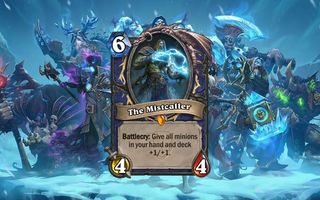
#7 The Mistcaller
The Mistcaller’s deck-buffing effect was way ahead of its time, at least that what he tells himself when he tries to sleep at night. Compare this card to Prince Keleseth and you can see how laughably bad it is. Of course, in his defense he does also buff the cards in your hand as well as the ones in your deck. Which honestly is no defense at all.
The overcosting of Mistcaller isn’t just about the value he generates, it is also a tempo issue. When Keleseth comes down on the turn two, the +1/+1 bonus is in effect when minions are still small, and removal spells are not very powerful. This allows the player who drops Keleseth to snowball their advantage into a huge lead. Most readers here will have faced a Keleseth that’s played on turn six. It’s nowhere near as scary, and that’s exactly what The Mistcaller represents.
In case you’re still not convinced of its terribleness, remember that The Mistcaller is a Shaman card—you know, that class that likes to dump its hand onto the board and then buff the cards. Alternatively, it’s the class with a whole bunch of removal spells, and no minions at all. Either way, The Mistcaller isn’t a good fit for what Shaman decks generally want to do. Now we know how powerful an early +1/+1 can be, you might say that this card missed its calling.
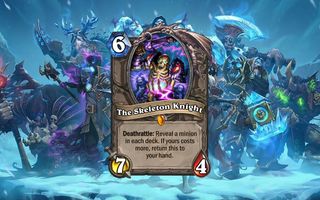
#6 The Skeleton Knight
The Skeleton Knight’s problem is not with its stats or its potential value, but with the way it performs in actual game situations. It is a good example of why calculating how good a card is based on stats alone doesn’t always work.
By nature, The Skeleton Knight belongs in a deck that takes a long time to win, so that it can be cast multiple times. The problem therefore is that a 7/4 is not a card that is going to stick around for long, and every time you spend six Mana to cast it, your opponent will inevitably be able to remove it for less. Eventually you lose the tempo game.
HotMEOWTH pointed out in his notes that the Joust mechanic is badly suited to the card. Against control decks the Joust will only win about half the time, due to the high Mana curve in those decks. Against aggro decks, casting the card multiple times for 6-Mana is unrealistic, as you more likely be dead before you get to cast it a second time.
None of these problems are likely to be helped by future sets. It’s hard to imagine a realistic change to the game that would leave The Skeleton Knight in a good spot. Make no bones about it, this card should stay buried.
Next page: Which dumpster fire of a card will be crowned worst of all Hearthstone's legendaries.
Most Popular

